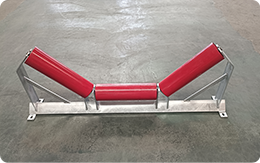 Afrikaans
Afrikaans  Albanian
Albanian  Amharic
Amharic  Arabic
Arabic  Armenian
Armenian  Azerbaijani
Azerbaijani  Basque
Basque  Belarusian
Belarusian  Bengali
Bengali  Bosnian
Bosnian  Bulgarian
Bulgarian  Catalan
Catalan  Cebuano
Cebuano  Corsican
Corsican  Croatian
Croatian  Czech
Czech  Danish
Danish  Dutch
Dutch  English
English  Esperanto
Esperanto  Estonian
Estonian  Finnish
Finnish  French
French  Frisian
Frisian  Galician
Galician  Georgian
Georgian  German
German  Greek
Greek  Gujarati
Gujarati  Haitian Creole
Haitian Creole  hausa
hausa  hawaiian
hawaiian  Hebrew
Hebrew  Hindi
Hindi  Miao
Miao  Hungarian
Hungarian  Icelandic
Icelandic  igbo
igbo  Indonesian
Indonesian  irish
irish  Italian
Italian  Japanese
Japanese  Javanese
Javanese  Kannada
Kannada  kazakh
kazakh  Khmer
Khmer  Rwandese
Rwandese  Korean
Korean  Kurdish
Kurdish  Kyrgyz
Kyrgyz  Lao
Lao  Latin
Latin  Latvian
Latvian  Lithuanian
Lithuanian  Luxembourgish
Luxembourgish  Macedonian
Macedonian  Malgashi
Malgashi  Malay
Malay  Malayalam
Malayalam  Maltese
Maltese  Maori
Maori  Marathi
Marathi  Mongolian
Mongolian  Myanmar
Myanmar  Nepali
Nepali  Norwegian
Norwegian  Norwegian
Norwegian  Occitan
Occitan  Pashto
Pashto  Persian
Persian  Polish
Polish  Portuguese
Portuguese  Punjabi
Punjabi  Romanian
Romanian  Russian
Russian  Samoan
Samoan  Scottish Gaelic
Scottish Gaelic  Serbian
Serbian  Sesotho
Sesotho  Shona
Shona  Sindhi
Sindhi  Sinhala
Sinhala  Slovak
Slovak  Slovenian
Slovenian  Somali
Somali  Spanish
Spanish  Sundanese
Sundanese  Swahili
Swahili  Swedish
Swedish  Tagalog
Tagalog  Tajik
Tajik  Tamil
Tamil  Tatar
Tatar  Telugu
Telugu  Thai
Thai  Turkish
Turkish  Turkmen
Turkmen  Ukrainian
Ukrainian  Urdu
Urdu  Uighur
Uighur  Uzbek
Uzbek  Vietnamese
Vietnamese  Welsh
Welsh  Bantu
Bantu  Yiddish
Yiddish  Yoruba
Yoruba  Zulu
Zulu guide roller
Understanding Guide Rollers Essential Components for Efficient Movement
Guide rollers are fundamental components in various machinery and systems, serving as a crucial element for ensuring smooth and controlled movement. These devices are designed to guide and support moving parts, making them integral to applications across numerous industries, including manufacturing, logistics, and transportation.
At its core, a guide roller consists of a cylindrical wheel that is mounted on a frame. This wheel is engineered to roll along surfaces, helping to direct the motion of equipment such as conveyor belts, doors, and other moving machinery. The design and material of guide rollers can vary significantly, with options available in plastic, rubber, and metal, each tailored to specific operational demands.
One of the primary advantages of using guide rollers is their ability to reduce friction. By providing a rolling surface, they minimize the resistance faced by moving parts, which leads to increased efficiency and decreased wear on machinery. This reduction in friction also contributes to lower energy consumption, making guide rollers a cost-effective choice in long-term operations.
In industrial settings, guide rollers are often used in conjunction with conveyor systems to facilitate the movement of goods and materials
. They help maintain the alignment of items being transported, preventing jams and ensuring a continuous flow. In addition to facilitating movement, guide rollers help prolong the lifespan of the conveyor belt by evenly distributing weight and reducing stress on critical components.guide roller

Another notable application of guide rollers is in door systems, particularly in sliding doors and garage doors. They enable smooth opening and closing motions, ensuring that doors operate quietly and efficiently. This is essential not only for user convenience but also for the safety of automated systems that rely on precise movements.
For optimal performance, guide rollers require proper maintenance. Regular inspections for wear and tear, along with lubrication, can significantly enhance their lifespan and functionality. Ensuring that guide rollers are correctly aligned and installed is also vital to prevent unnecessary strain on moving parts.
In recent years, innovations in material science and engineering have led to the development of advanced guide roller designs. These modern rollers often feature enhanced durability and resistance to environmental factors such as temperature fluctuations and moisture. As industries continue to evolve and demand higher efficiency, the role of guide rollers is likely to become even more prominent.
In conclusion, guide rollers play a vital role in the smooth operation of various systems and machinery. Their ability to reduce friction, ensure alignment, and support efficient movement makes them indispensable components in many applications. As technology advances, the development of guide rollers will continue to enhance productivity and operational efficiency across diverse industries. Understanding their significance is crucial for anyone involved in manufacturing, logistics, or equipment maintenance.
-
Revolutionizing Conveyor Reliability with Advanced Rubber Lagging PulleysNewsJul.22,2025
-
Powering Precision and Durability with Expert Manufacturers of Conveyor ComponentsNewsJul.22,2025
-
Optimizing Conveyor Systems with Advanced Conveyor AccessoriesNewsJul.22,2025
-
Maximize Conveyor Efficiency with Quality Conveyor Idler PulleysNewsJul.22,2025
-
Future-Proof Your Conveyor System with High-Performance Polyurethane RollerNewsJul.22,2025
-
Driving Efficiency Forward with Quality Idlers and RollersNewsJul.22,2025





























